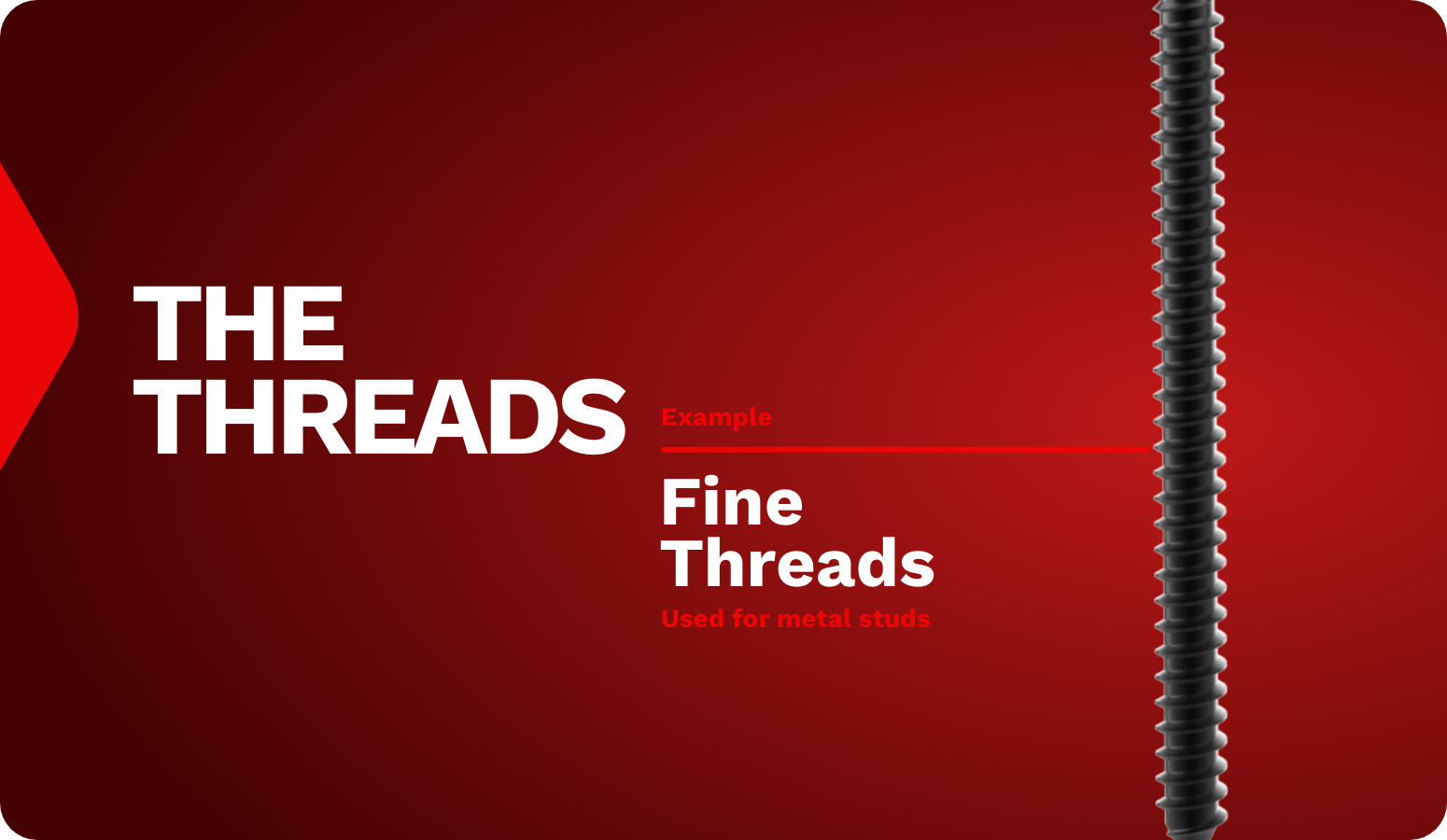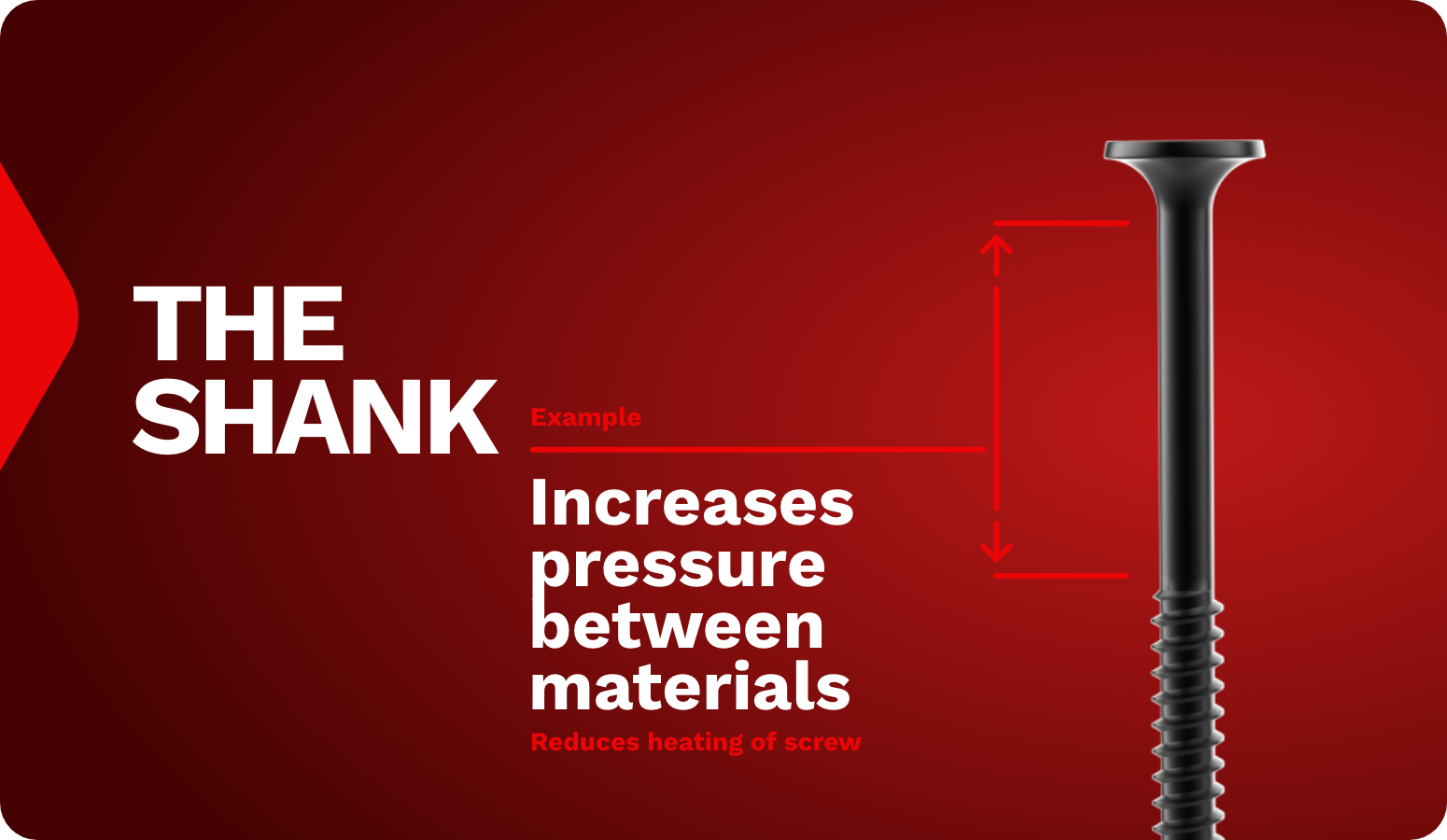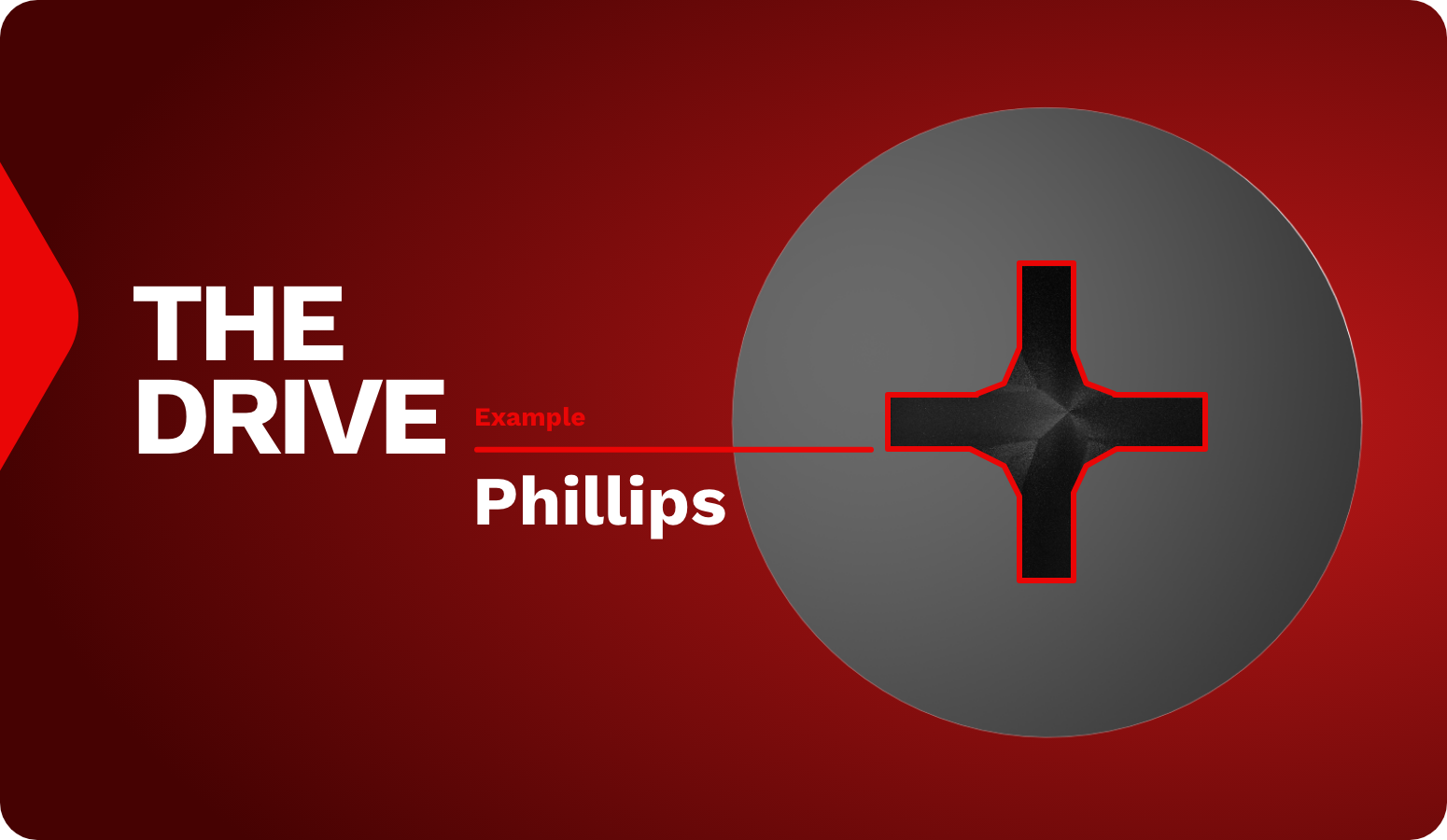
What Are The 5 Parts Of A Screw? - SCREW STOP
Demystifying the Anatomy of Screws: Unveiling the 5 Essential Parts of a Screw
Screws – unassuming yet essential fasteners that hold our world together. They are fundamental in our lives. Distinct from bolts, screws diligently bind two or more surfaces, their penetrating threads carving a path as they venture forth. Yet, amidst the familiarity of screws, the intricate nuances of their composition often remain shrouded. Primarily, a screw's body has five parts, the tip, its threads, the shank, the screw head, and the type of drive. Variations in these five attributes alone allow screws to hold virtually anything. So whether you're a seasoned screw user or a curious beginner, delving into the five crucial parts can deepen your understanding of screws and how they can help you in your next project.
The 5 Essential Parts of a Screw: A Quick Overview
- The Tip: Pointed end for penetration; varies based on material.
- The Thread: Helical ridges on the screw that scoop out material as the screw advances.
- The Shank: Unthreaded portion for added strength, especially in a wood screw.
- The Head: Crown of the screw with traditional or counter-sunk options; this is where the screwdriver grips to apply force.
- The Drive: Determines screwdriver type needed for installation.
The TIP of the screw
At the forefront of every screw lies a sharp and pointed tip. It is a master of material penetration, designed to puncture and burrow into different surfaces. The tip conquers even the most rebellious materials by sporting a narrower profile than the rest of the screw. However, the tip's form shifts according to its intended territory – the material it seeks to conquer.
Variety in tip styles
Screw tips come in various styles tailored to specific applications. For example, a self-drilling tip has a drill-like point for piercing through materials as they are screwed in. Self-tapping screws, on the other hand, create threads as they advance, making it easier for the threads to screw in and hold the material.
- Self-tapping tips: These tips are ideal for soft materials like wood and plastic, where the material can be easily penetrated. They create threads as they are driven into the material, thus eliminating the need to drill pilot holes. They are efficient for quick assembly and installation in woodworking and furniture assembly projects. A general rule of thumb is to consider the material type; a self-tapping tip is the right choice if the material is relatively soft.
- Self-drilling tips: Screws with self-drilling tips are also known as drill-point screws. It's because the tip is sharp, like a tiny drill bit. These are designed for more rigid materials like metal, steel, and masonry (bricks). They combine the drilling and tapping functions, making bore through rigid materials easier. They are helpful where drilling a pilot hole is impossible, or precision drilling is required. A general rule of thumb is to consider the material type; a self-drilling tip is the right choice if the material is rigid.
These are only the two most popular tip types used with hard and soft materials, respectively. There are other tip types, specialized for one application. Checking the manufacturer’s instructions and consulting building codes is a good starting point to determine if a screw is right for you.
Ease of insertion
The purpose of the tip is to make it easy for you to insert the screw into your material of choice. The right tip can minimize the risk of splitting wood or breaking concrete slabs. For this reason, tips are engineered for a specific task they need to accomplish in a specific material.
Importance of selecting the right tip
Matching tip types to materials is vital for an efficient and neat installation. Hard materials require a sharper pointed tip, while soft materials can benefit from more gradual points to prevent excessive force. As we saw in the case of self-drilling and self-tapping tips.

The THREADS of the screw
Threading is where the true magic happens – an intricate dance of helical ridges. Like miniature spirals, these threads are the driving force that excavates material as the screw screws in. The threading paves the screw's path through the surface by churning away material. The material scooped by the screw thread ascends through the helical ridges, emerging from the surface like a trail of stardust. The primary role of the thread is to hold on to the material that it's going through to form a secure connection.
Exploring thread types
Screw threads come in various shapes and sizes, depending on the material and its application. The goal is to find a thread type that secures itself without much force and goes through without damaging the material.
- Coarse threads: Coarse threads have a larger pitch, i.e., the distance between the threads is larger compared to fine thread screws. This means fewer threads per inch than a similar fine thread screw. These are well suited for softer materials as they provide better grip and low stripping likelihood.
- Fine threads: Fine thread screws have a smaller pitch, meaning more threads per inch. They excel in applications where fine adjustments are required. A metal screw, a machine screw, and an electronic screw, all use fine threads.
- Specialty threads: Specialty threads like self-tapping or self-drilling threads are designed for specific tasks. Self-tapping threads create unthreaded holes, while self-drilling threads combine drilling and threading functions.
Pitch and mechanical advantage
The pitch of a screw is the distance between two threads along a screw’s axis. The lower the pitch, the finer the thread type. Coarse thread screws have a greater overall mechanical advantage, as they are more conditioned to handle high torque levels from the drill.
Thread direction
Screws can have either right-hand or left-hand threads. Right-hand threads are the most common, where turning the screw clockwise tightens it. Left-hand threads are rare and are only used in very specialized applications. Left-hand screws are very rarely used, only in specific mechanical applications. So unless you have an engineering project, you are good with right-hand threads.
Guidelines for thread selection
Let’s cover the basics of thread selection in screws. On our website, you will find this as a criterion for screw selection, so you must understand this clearly.
- Consider material: Selecting thread types based on the material that you are working with. Coarse threads are great for soft substrates and are highly versatile. They will, however, not be suitable for hard materials. Stainless steel sheet metal screws are very different from other types of screws such as a zinc wood screw.
- Application requirement: Consider the installation's load, torque, and precision requirements. Heavy-duty applications like drywall, outdoor decks, and furniture usually fair well with coarse threads. Fine threads offer precision and are suitable for screwing into metal.
- Special applications: Electronics and automotive work use a variety of fasteners for assembly. Consider industry standards and guidelines for thread types in specific areas of installation.
The SHANK of the screw
Meet the shank, the unsung hero beneath the threads. For wood screws, the shank is the unthreaded domain that reigns above the threaded realm. This unthreaded segment endows wood screws with heightened strength and security. Unlike their fully-threaded counterparts, wood screws gain their resilience from this unique feature. While other screws opt for complete threading, wood screws remain distinct with their predominantly unthreaded shank.
Shank variations
Let’s cover the different variations of a screw shank and what it means for your next project.
- Straight shank: A straight shank is cylindrical and maintains the same major diameter along its length. This is the most common type of shank used in wood, plastic, and metal applications.
- Tapered shank: A tapered shank gradually decreases in diameter from the head of the screw to the tip. This means that the minor and major diameter of the screw isn't the same. This shank type is ideal for use in sheet metal, where you need to create a flush surface.
- Fluted shank: A fluted shank has grooves or flutes along its length. It's designed to provide space for the displaced material during insertion. This shank type is commonly seen in masonry screws, concrete anchors, and wood screws.
- Threaded shank: Some screws lack a bare shank and instead have shanks all the way from the tip to the head of the screw. This is ideal in cases where minor adjustments are required. These adjustments can be the difference between 1/2 inch and 3/4 of an inch.
Shank length and diameter
The length of the shank varies with the length of the screw. A longer shank will be used for deeper penetration when joining thicker or multiple materials. A shorter shank will be suitable for shallower applications. Thicker shanks provide greater load bearing capacity compared to thinner shanks. These would be ideal when the material used is heavy.
Guidelines for shank selection
Let’s cover the basics of shank selection in screws.
- Material and load: Ensure that the shank’s diameter and length are appropriate for the materials' thickness and expected load. The thicker the shank, the greater the support.
- Tapered shanks: If you require a flush surface finish, consider screws with a tapered shank. They are the ideal for a seamless look.
- Fluted shank: In applications like masonry, where material displacement is a concern, consider using a fluted shank.
The HEAD of the screw
Behold the crown of the screw – the head. A realm of two distinct types: traditional and counter-sunk. Counter-sunk heads grace surfaces with their flush embrace, while traditional heads project assertively. Both varieties sport notches, harboring the secrets to wielding a screwdriver. To coax a screw into its destiny, the screwdriver nestles into these notches, rotating to manifest the magic of connection.
Types of screw heads
Screw heads come in multiple types. There are two common screw head types, each with unique benefits.
- Traditional: Arguably the most common type of screw head, a traditional screw head bores through the material, sits on top of the material and doesn’t fit completely flush. One such example is a round head screw, which was traditionally used but is now replaced by countersunk screws in most cases.
- Countersunk: Countersunk screws are the modern standard in most cases. These screws sit entirely flush with the surface they are drilled into, making them ideal in topics where the screw will be covered with primer or plaster.
The DRIVE of the screw
When the question of "Flat head or Philips head?" arises, the focus is, in truth, the drive rather than the head. The drive, a pivotal force, dictates the realm of the screwdriver required for installation. Alot of people confuse the screw head with its drive type. While the drive does exist on the head, when people say it's a Phillips-head, they are talking about the screw’s drive. This element wields the power to guide the right tool to its rightful task. Let's see the different drive types and their use cases.
Phillips-head
A Phillips head drive is arguably the most common type used in modern-day projects. It's the one that forms a plus or cross shape on top of the screw. This is where a screwdriver is inserted. They can handle a high torque level, allowing easy and quick installation.
Flathead
A flat-head screw only has two ridges compared to 4 on a Phillips head. It lives up to its name because it can be tightened only with a “flat” head screwdriver.
Hex drive
A hex drive screw is precisely what it sounds like. Its features hexagonal ridges on top of the screw head. These can be installed using a hex wrench or a drill bit.
Torx drive or star
A torx drive screw features a star on the screw head. Thanks to its star shape with multiple ridges, a Torx screw allows for high torque during installation. These screws are almost exclusively used installation of computers and other electronics.
Double hex drive
Instead of one hexagonal ridge, a double hex has 12 ridges. 2 times 6, that’s 12. These types of screws allow two positions for a hex drill bit. These are handy when screwing in tight spaces, especially between automotive components. While this allows for easier installation, these screws are more susceptible to slippage and damage.
Robertson or square drive
A Robertson screw has a square on top of the screw head. With four total ridges, this screw can handle high amounts of torque. While the Phillips head also has four ridges but with a square drive, the overall contact patch of the drill bit is greater. These fasteners are most commonly used in Canada and only in some parts of the United States.
A Grand Finale of Possibilities
As we conclude this journey through screw anatomy, remember that the complexity doesn't cease here. The world of screws unveils further embellishments depending on type and application. A steadfast companion – the washer – frequently joins the ensemble, standard or locking. The washer ensures a tighter seal and an even distribution of loads across extended surfaces. In summation, the essence of each screw component stands vital, transforming to suit its distinct purpose. Mastery of these components extends a key to unlocking the diverse realm of screws, fostering a profound connection between function and form.
There are a number of materials used in the manufacturing process including stainless steel, brass, steel, and zinc. The large number and variation of each screw type can make it difficult to select the perfect screw. At Screw Stop we pride ourselves on ensuring that you get the right screw for the job and know the ins and outs of each screw, from thread pitch, to inclined plane, black oxide coatings, or a domed head we'll help you get the clamping force you need for a wide range of different materials and projects!










